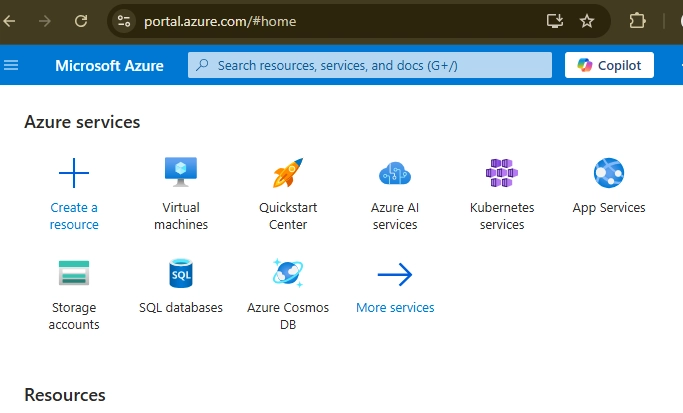REPL Avalanche
Sometime in early November, I decided to have a look at re-imagining the REPL (Read, Eval, Print, Loop) that is provided by default by the Raku Programming Language. Little did I know that that work would in the end result in six new distributions. Each providing some useful sub-functionality of the REPL, but also providing useful functionality outside of the REPL context. Parallel to this effort, a Problem Solving Issue was created about the lack of configurability of the standard REPL, and a proof of concept Pull Request was made by Will Coleda, which proved to be inspirational. The standard REPL But first, for the uninitiated, a small introduction. The Raku standard REPL can be invoked by calling raku from the command line without any arguments: $ raku Welcome to Rakudo™ v2025.01. Implementing the Raku® Programming Language v6.d. Built on MoarVM version 2025.01. To exit type 'exit' or '^D' [0] > And then you can enter Raku code and have it immediately executed. For example: [0] > my $a = 42 42 [1] > say "a = $a" a = 42 [1] > say $*0 42 [1] > exit $ The number between square brackets indicates the number of expression values that have been saved. It is also the index at which the next expression value will be saved. Note that that number went from 0 to 1 after the first line entered. But not after the second line entered. This is because the first line did not cause any output. In that case, the REPL will show the value of the expression and keep it for future reference. The second line entered did cause some output, so the value was not saved, and the index was not incremented. Finally, the third line shows how you can refer to the originally saved value, by accessing the dynamic variable $*0 (with the number corresponding to the index at which the value was saved). There is no help available in the standard REPL: it doesn't even have any commands! The way to exit the REPL is to type "exit". Which is in fact calling the Raku exit function that exits the current process. Three months on Three months on since November 2024, the REPL distribution provides a REPL that is ready for production (so to speak, as the use of this tool in production would be limited). zef install REPL is enough to install this distribution and all of its dependencies. The REPL distribution provides the same features as the standard Raku REPL, but also provides: configurable prompt through command line arguments and environment variables REPL specific commands that can be entered by starting the line with "=" to distinguish them from Raku code command shortcuts ("=q" being short for "=quit" to exit the REPL) help sections for beginners (=introduction, =completions) context-sensitive TAB completions special purpose TAB completions (\123 → ¹²³ → ₁₂₃, foo! → FOO → Foo, \heart →

Sometime in early November, I decided to have a look at re-imagining the REPL (Read, Eval, Print, Loop) that is provided by default by the Raku Programming Language. Little did I know that that work would in the end result in six new distributions. Each providing some useful sub-functionality of the REPL, but also providing useful functionality outside of the REPL context.
Parallel to this effort, a Problem Solving Issue was created about the lack of configurability of the standard REPL, and a proof of concept Pull Request was made by Will Coleda, which proved to be inspirational.
The standard REPL
But first, for the uninitiated, a small introduction. The Raku standard REPL can be invoked by calling raku from the command line without any arguments:
$ raku
Welcome to Rakudo™ v2025.01.
Implementing the Raku® Programming Language v6.d.
Built on MoarVM version 2025.01.
To exit type 'exit' or '^D'
[0] >
And then you can enter Raku code and have it immediately executed. For example:
[0] > my $a = 42
42
[1] > say "a = $a"
a = 42
[1] > say $*0
42
[1] > exit
$
The number between square brackets indicates the number of expression values that have been saved. It is also the index at which the next expression value will be saved.
Note that that number went from 0 to 1 after the first line entered. But not after the second line entered. This is because the first line did not cause any output. In that case, the REPL will show the value of the expression and keep it for future reference.
The second line entered did cause some output, so the value was not saved, and the index was not incremented.
Finally, the third line shows how you can refer to the originally saved value, by accessing the dynamic variable $*0 (with the number corresponding to the index at which the value was saved).
There is no help available in the standard REPL: it doesn't even have any commands! The way to exit the REPL is to type "exit". Which is in fact calling the Raku
exitfunction that exits the current process.
Three months on
Three months on since November 2024, the REPL distribution provides a REPL that is ready for production (so to speak, as the use of this tool in production would be limited).
zef install REPLis enough to install this distribution and all of its dependencies.
The REPL distribution provides the same features as the standard Raku REPL, but also provides:
- configurable prompt through command line arguments and environment variables
- REPL specific commands that can be entered by starting the line with "=" to distinguish them from Raku code
- command shortcuts ("=q" being short for "=quit" to exit the REPL)
- help sections for beginners (=introduction, =completions)
- context-sensitive TAB completions
- special purpose TAB completions (\123 → ¹²³ → ₁₂₃, foo! → FOO → Foo, \heart →













































































































































































![[The AI Show Episode 142]: ChatGPT’s New Image Generator, Studio Ghibli Craze and Backlash, Gemini 2.5, OpenAI Academy, 4o Updates, Vibe Marketing & xAI Acquires X](https://www.marketingaiinstitute.com/hubfs/ep%20142%20cover.png)


























































































































![[FREE EBOOKS] The Kubernetes Bible, The Ultimate Linux Shell Scripting Guide & Four More Best Selling Titles](https://www.javacodegeeks.com/wp-content/uploads/2012/12/jcg-logo.jpg)



![From drop-out to software architect with Jason Lengstorf [Podcast #167]](https://cdn.hashnode.com/res/hashnode/image/upload/v1743796461357/f3d19cd7-e6f5-4d7c-8bfc-eb974bc8da68.png?#)






































































































.png?#)





.jpg?#)































_Christophe_Coat_Alamy.jpg?#)








































































































![Rapidus in Talks With Apple as It Accelerates Toward 2nm Chip Production [Report]](https://www.iclarified.com/images/news/96937/96937/96937-640.jpg)







































































































































